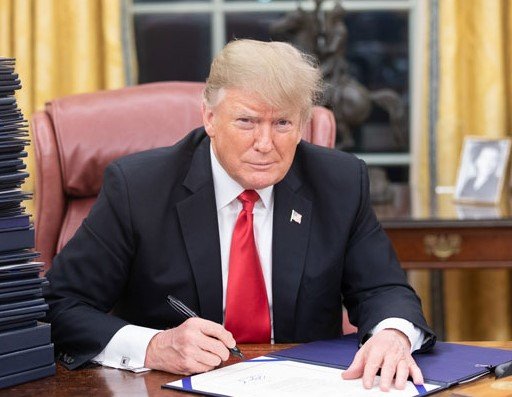Allies Caught in the Crossfire as Trump’s Push for Bilateral Deals Upsets Global Supply Chains
In another dramatic move that’s bound to rattle trading floors and foreign capitals alike, President Donald Trump has sent tariff letters to 22 countries, signaling duties of up to 50% on selected imports. The measures, which take effect August 1, are being pitched by the White House as part of a broader push to renegotiate what it sees as unfair trade deals.
Among the countries on the receiving end? Some of Washington’s closest allies — including Japan and South Korea — as well as emerging economies like Bangladesh, Indonesia, and Brazil. The message is clear: no one is exempt.
Not Just Rhetoric Anymore — Tariffs Are Here
Trump’s trade threats have hovered over global markets for months. But this week, they turned real. On Monday, the administration dispatched its first wave of tariff letters. By Wednesday, a second wave had gone out. Combined, they covered 22 countries.
The tariff rates range between 25% and 50%, depending on the country and commodity. Some, like the Philippines and Sri Lanka, are seeing lower thresholds — closer to 20% in some cases — likely a diplomatic nod to their strategic locations. But for the rest, there’s little cushioning.
Just one sentence here: The August 1 deadline gives exporters less than a month to prepare.
Analysts say the pattern is clear: Trump is going after multilateral trade arrangements and trying to strong-arm nations into one-on-one deals. That approach might look like strength at home, but overseas, it’s creating friction.

Asia at the Epicenter of the Tariff Wave
Nowhere is the impact being felt more than in Asia. Out of the 22 countries, over a dozen are in or around the continent — including Japan, South Korea, Thailand, Indonesia, and Bangladesh. For many, these tariffs are more than a nuisance. They’re a full-on disruption.
-
South Korea and Japan are major U.S. allies with defense ties, yet they’re facing the same duties as trade rivals.
-
Indonesia, already under pressure from U.S. scrutiny on palm oil and textiles, has been hit with a 35% tariff on several categories.
-
Bangladesh — one of the world’s top garment exporters — could see its apparel sector take a heavy blow.
The political message is almost louder than the economic one. Trump’s campaign trail rhetoric has leaned heavily on “America First” and reversing trade deficits. But this latest move — especially targeting Asian allies — seems more strategic than symbolic.
Full List of Countries and Their Tariff Rates
The White House hasn’t released a formal document publicly, but administration insiders confirmed the following list based on letters sent over the past three days:
| Country | Estimated Tariff Range |
|---|---|
| Japan | 25–35% |
| South Korea | 30–40% |
| Indonesia | 35% |
| Bangladesh | 30–45% |
| Thailand | 25% |
| Brazil | 30–50% |
| Philippines | 20–30% |
| Sri Lanka | 20% |
| Brunei | 25% |
| Algeria | 30% |
| Libya | 30% |
| Iraq | 25% |
| Moldova | 25% |
| Malaysia | 35% |
| Vietnam | 40% |
| Cambodia | 30% |
| Tunisia | 25% |
| Egypt | 30% |
| Turkey | 40% |
| Morocco | 25% |
| Peru | 30% |
| Pakistan | 30–35% |
That’s a wide swath of global trade, touching everything from electronics and semiconductors to garments, chemicals, and palm oil.
Markets Respond Cautiously, But Eyes Remain on August
Wall Street didn’t spiral into chaos. Not yet, anyway. But the S&P 500 took a slight dip on Wednesday afternoon as word of the second batch of letters got out. More notably, Asian markets felt the pinch.
The Korean won dropped nearly 1.3% against the dollar in early trading. Japan’s Nikkei saw a half-point slide. Traders expect more movement as August 1 nears.
One-liner here: Exporters are scrambling, but governments are treading carefully.
Diplomats from South Korea and Japan are reportedly seeking urgent clarification from Washington. Neither government has ruled out retaliatory measures but are trying to avoid a public tit-for-tat — at least for now.
Is This Just the Start of a Bigger Shift?
This might not be the end of it. Trump, according to insiders, is already eyeing a third round of tariff letters. Countries like Vietnam, Mexico, and even the EU could be next in line. He’s made clear that any nation with a persistent trade surplus with the U.S. is fair game.
Why now? With the 2026 midterms looming and Trump’s campaign infrastructure firing up again, he’s leaning on familiar themes: trade, sovereignty, and punishing global freeloaders.
Two short sentences here: But the stakes are higher now. A full-blown trade war could send ripple effects through inflation, consumer prices, and global cooperation.
If the previous trade standoff with China was any clue, things can escalate — and fast.
Quiet Grumblings in Washington
Back in D.C., not everyone’s cheering. A handful of Senate Republicans are concerned about the impact on their state economies — particularly in the agricultural belt and among manufacturers dependent on imported components.
There’s also concern about how all this affects global stability. With wars simmering in Ukraine and the Middle East, some believe now’s not the best time to provoke longtime allies.
Still, Trump has rarely let critics steer him off course.
One sentence paragraph again: He’s playing to his base — and he knows it.
For industries already bruised from supply chain shocks, this round of tariffs could be yet another gut punch. U.S. importers might find themselves squeezed between higher prices and fewer sourcing options. And for foreign partners, it’s yet another sign that old alliances can’t be taken for granted anymore.
